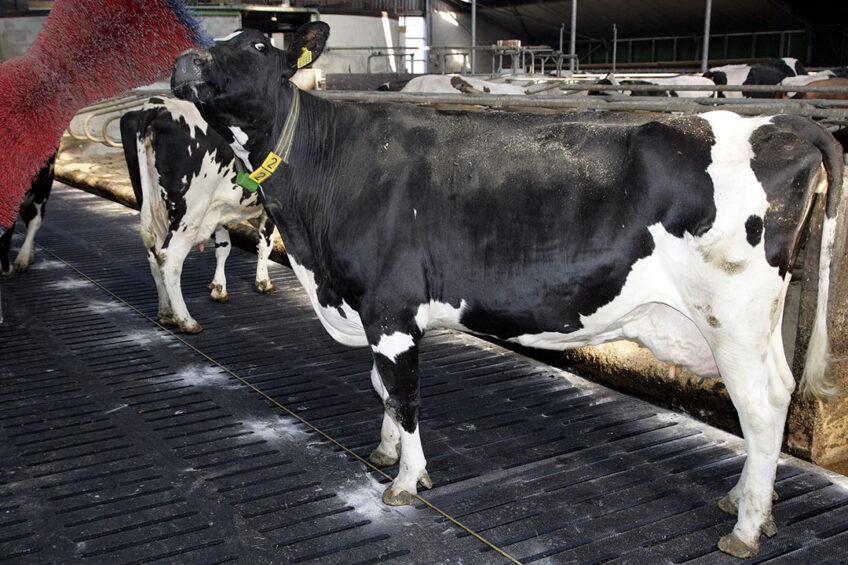Ketosis in dairy cows: do’s and don’ts

Ketosis is a common transition disorder with a prevalence of 5-80% in dairy farms. Ketosis is defined as an elevated concentration of ketone bodies such as acetone, acetoacetate, and beta-hydroxybutyrate in all body fluids. Clinical signs of ketosis include anorexia, decreased milk production, loss of body condition, firm, dry faeces, and occasionally neurologic signs. In this article, do’s and don’ts regarding ketosis management are discussed.
Ketosis is also associated with the occurrence of other transition cow diseases such as metritis, retained placenta, and left displaced abomasum. Therefore, monitoring the herd level of ketosis may prevent these economically significant diseases.
Monitoring ketosis in the dairy herd
To monitor fresh cow incidence of ketosis, it is essential to make sure that enough animals are tested in the herd. An acceptable protocol is to test 12-15 cows. If more than 10% of the cows have ketone levels above the accepted standard of 14.4 ml/dL, the group is considered to have a ketosis issue.
Proper bunk space and stocking density
Negative energy balance around the time of calving due to increased energy demand from milking production and decreased dry matter intake leads to adipose mobilisation and ketone body production. Therefore, it is important to address the issues that cause reduced dry matter intake, such as bunk space and stocking density.
The minimum bunk space per head is 24 inches, and the preferred bunk space is about 30 inches per head. The optimal bedded pack space is between 120 and 150 sq. ft (about 11-14 sqm) per head, and the stocking density for free stalls must remain at 1 cow per stall.
Focus on the dry period
In dairy production systems, the dry period lasts 60 days, and it involves both far-off and close-up periods. During the dry period, the pregnant cow is given a break from milking prior to the next calving to replenish body reserves and regenerate milk-secreting tissue after months of milking.
Research studies showed that the lack of providing a dry period for a cow reduces milk production in the next lactation by 25-30% and increases the risk of metabolic diseases, including ketosis and milk fever and conditions like displaced abomasum. Furthermore, good record-keeping is a prerequisite for proper dry period management.
Work closely with veterinarians and nutritionists
Veterinarians and nutritionists assist dairy farmers in identifying the possible causes of ketosis and to address those issues. Treatments and prevention protocols must be discussed with veterinarians. For example, subclinical ketosis can be treated with 300 ml of propylene glycol orally once per day for 3-5 days.
Body condition scoring
Body condition scoring is a valuable tool with significant impacts on transition performance and the prevalence of ketosis. The ideal body condition score post-calving ranges from 2.75 to 3 out of 5.
Low and high body condition scores during the transition period increase the risk of ketosis and detrimentally impact reproduction performance. Therefore, it is recommended to monitor the body condition score routinely at the time of dry-off, moving to close-up, calving, and moving out of the fresh pen.
Don’t co-mingle cows and heifers
Co-mingling heifers and older cows causes more stress in heifers, leads to a reduction in dry matter intake, and further contributes to a negative energy balance. In addition, there is a social hierarchy in dairy herds, and moving a cow into a new pen with cows it is not familiar with can add additional stress. Thus, it is recommended to move the cows as a group so they can be with other familiar cows.
Don’t feed dairy cows excessively
Each dairy production phase requires specific attention regarding feeding. During the dry period, since the cow isn’t being milked, too much energy in feed must be avoided. In addition, concentrates and grains will cause fat storage and predispose the animal to a difficult birth, ketosis, udder edema, downer cow syndrome, and abomasum displacement.
Dairy cows need adequate amounts of energy, proteins, minerals, and vitamins. In addition, trace minerals provide a more robust immune response during calving and during the transition, thus improving a cow’s inflammatory response and reducing the incidence and severity of ketosis.
Join 13,000+ subscribers
Subscribe to our newsletter to stay updated about all the need-to-know content in the dairy sector, two times a week.










